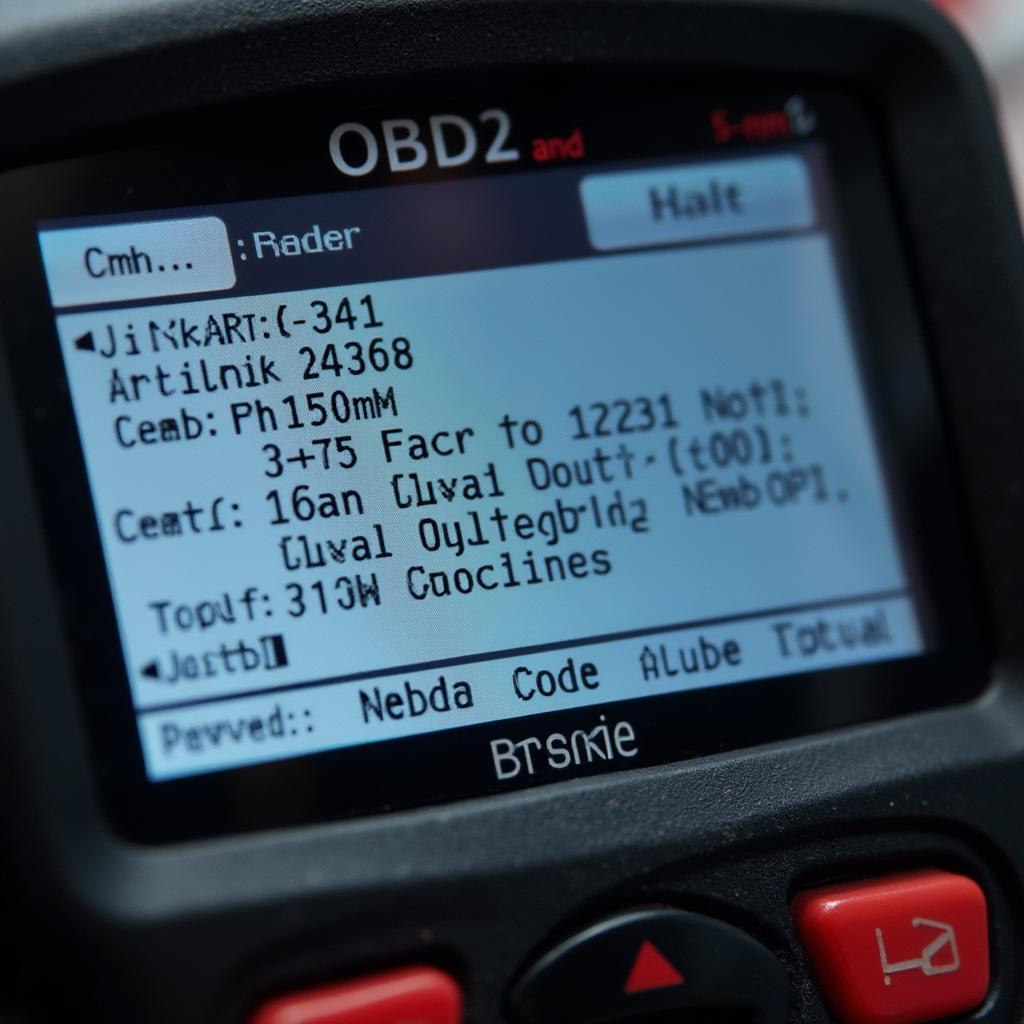Understanding how to read an OBD2 code reader is essential for any car owner or mechanic. These handy devices provide valuable insight into your vehicle’s health, empowering you to diagnose issues and potentially save money on costly repairs. This guide will walk you through the process, from plugging in the reader to interpreting the codes.
Understanding the Basics of OBD2 Code Readers
OBD2, or On-Board Diagnostics, is a standardized system that allows external electronics to interface with a vehicle’s computer. The OBD2 code reader acts as a translator, displaying the information in a readable format. This information is presented as diagnostic trouble codes (DTCs), which are alphanumeric codes that correspond to specific issues.
Accessing this information isn’t complicated. The OBD2 port is typically located under the dashboard on the driver’s side, often near the steering column. Once located, simply plug in your OBD2 code reader. Turn the ignition to the “on” position (without starting the engine), and your reader will power up and begin communicating with the vehicle’s computer.
Different OBD2 code readers have different features and interfaces, from simple devices displaying only the code to more advanced models providing detailed descriptions and even live data. Understanding these features will enhance your diagnostic abilities. For a detailed overview of a specific model, consider the carscan obd2 code reader 3013 manual.
Deciphering the OBD2 Codes
The codes displayed on your reader are standardized and follow a specific format. They typically consist of a letter and four numbers. The letter indicates the system related to the code, such as “P” for powertrain, “B” for body, “C” for chassis, and “U” for network. The numbers further specify the nature of the problem. For example, P0301 indicates a misfire in cylinder 1.
Once you’ve retrieved the codes, you need to interpret them. While some readers offer built-in code definitions, others require external resources. Reliable online databases and repair manuals can provide detailed explanations of each code, along with potential causes and solutions. You can also refer to resources like the innova 3100 digital obd2 code reader for more specific device information.
What if I see multiple codes?
Sometimes, a single problem can trigger multiple codes. It’s crucial to address the root cause rather than simply clearing all the codes. Prioritize codes related to driveability and safety concerns. Often, fixing one underlying issue can resolve multiple associated codes.
John Smith, ASE Certified Master Technician, advises, “Don’t be intimidated by multiple codes. Systematic diagnosis, starting with the most critical codes, is key to efficient troubleshooting.”
Using OBD2 Codes for Troubleshooting
OBD2 codes are a starting point, not a definitive diagnosis. They indicate the area of concern, but further investigation is often necessary. For instance, a P0420 code (catalyst system efficiency below threshold) could be due to a faulty catalytic converter, an oxygen sensor issue, or even a simple exhaust leak.
Remember, the obd2 code reader 2003 malibu or the obd2 code reader adapter for 93 honda civic may offer different functionalities depending on the vehicle’s make and model.
Maria Garcia, Automotive Diagnostics Specialist, emphasizes, “OBD2 codes guide your diagnostic process, providing valuable clues. Combine these codes with your mechanical knowledge and further testing to pinpoint the exact problem.”
Conclusion
Learning how to read an OBD2 code reader is a powerful tool for any car enthusiast. It allows you to understand your vehicle’s health, diagnose issues, and make informed decisions about repairs. While interpreting the codes may seem daunting initially, with a little practice and the right resources, you can effectively use this technology to keep your car running smoothly. Remember to always consult reliable resources and seek professional help when needed.
FAQs
-
What does OBD2 stand for? OBD2 stands for On-Board Diagnostics, version 2.
-
Where is the OBD2 port located? The OBD2 port is usually found under the dashboard on the driver’s side.
-
What do the letters in the OBD2 codes mean? The letters represent the system associated with the code (e.g., P for Powertrain, B for Body).
-
Do I need a special OBD2 reader for my car? Most standard OBD2 readers work with a wide range of vehicles.
-
Can I clear the codes myself? Yes, most OBD2 readers have a function to clear codes. However, this doesn’t fix the underlying problem.
-
What if the codes return after clearing them? If the codes reappear, it indicates the problem hasn’t been resolved. Further diagnosis is required.
-
Can an OBD2 reader tell me exactly what’s wrong with my car? OBD2 codes provide clues, not definitive diagnoses. They point to the area of concern, requiring further investigation.
For further assistance, please contact us via WhatsApp: +1(641)206-8880 or Email: [email protected]. Our customer service team is available 24/7.


